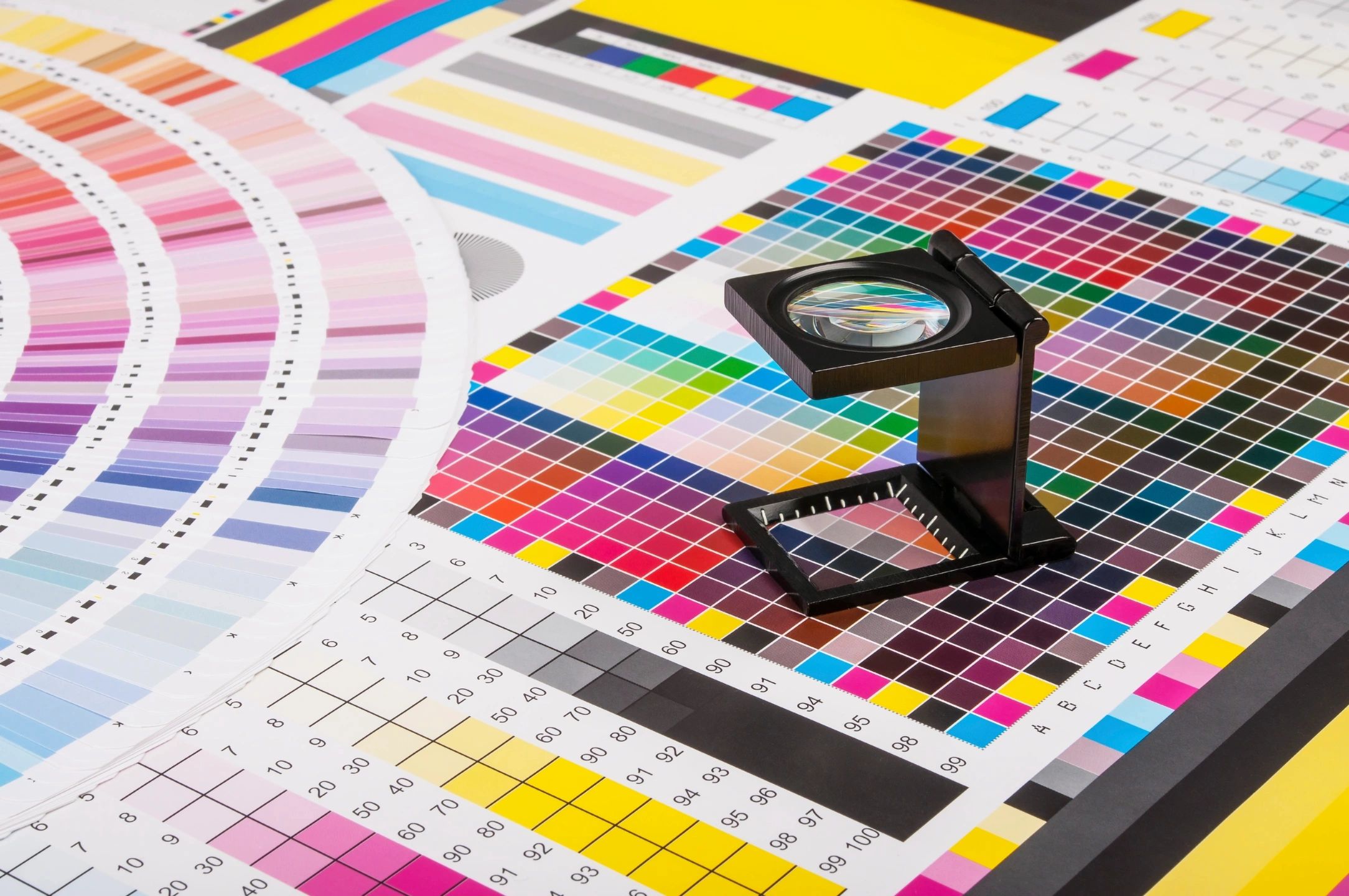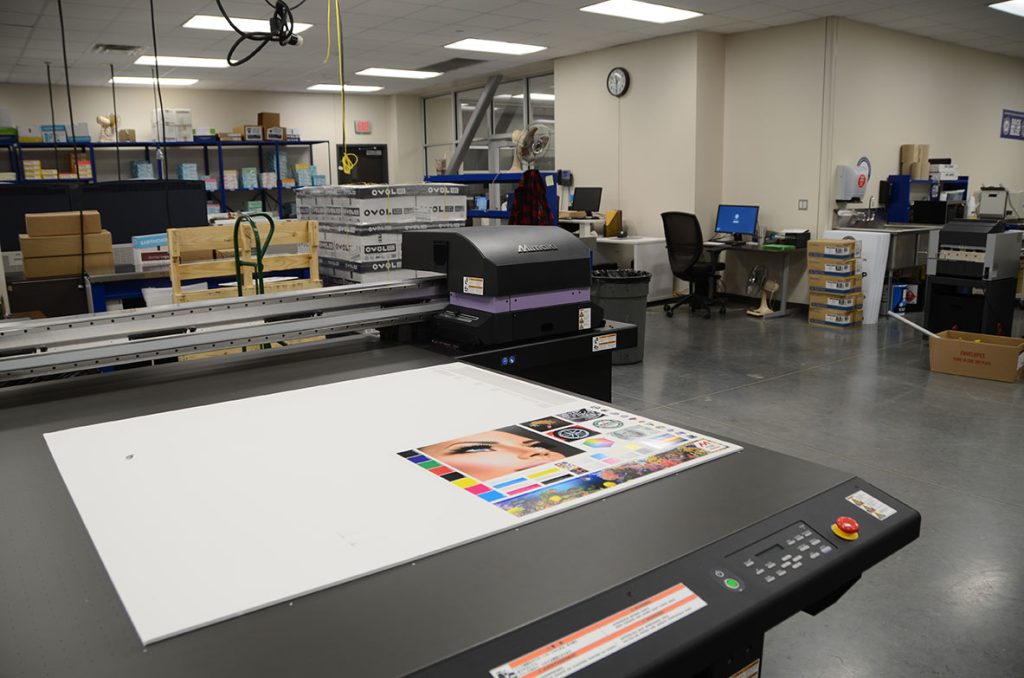Which Print Shop Near Me Offers the Best Canvas Options?
Which Print Shop Near Me Offers the Best Canvas Options?
Blog Article
The Ultimate Guide to Making Use Of Printing Services for Custom-made Art Prints
Guiding through the world of personalized art prints needs a clear understanding of numerous printing services. Musicians should take into consideration elements such as printing strategies and materials to accomplish the wanted end result. Each decision, from art work preparation to color calibration, plays an important duty in the final item. As they explore these elements, artists can disclose the possibility for their work to attach with target markets in a meaningful method. What actions can they take to assure their prints stand out?
Comprehending Different Kinds Of Printing Providers
Although many individuals may neglect the ins and outs of printing services, understanding the different kinds offered is important for anyone aiming to produce personalized art prints. One of the most typical kinds include electronic printing, counter printing, and display printing. Digital printing is favored for its quick turnaround and capability to create top quality pictures straight from electronic documents, making it ideal for little runs. On the other hand, offset printing offers superior photo top quality and is affordable for bigger amounts, utilizing plates to move ink onto paper. Display printing, frequently utilized for fabrics and marketing products, entails pushing ink with a mesh display, enabling vivid shades and structures. Each technique has its one-of-a-kind benefits and restrictions, making it important for musicians and developers to assess their particular needs, such as amount, preferred top quality, and spending plan, prior to choosing a printing service that straightens with their imaginative vision.
Picking the Right Products for Your Prints
Picking the ideal materials is important for accomplishing premium customized art prints. Understanding the different kinds of paper and the relevance of ink quality can greatly affect the result. Artists have to consider these factors to ensure their vision is accurately stood for in the published piece.
Paper Types Explained
Picking the ideal paper type is important for attaining the desired visual and sturdiness in customized art prints. Numerous alternatives exist, each offering distinctive attributes. For circumstances, glossy paper enhances shade vibrancy and information, making it perfect for digital photography prints. Alternatively, matte paper gives a softer finish, which is more suitable for art work that needs nuance and structure. Art paper, often made from cotton or alpha cellulose, provides archival quality and is ideal for reproducing detailed information in paintings (Print Shop Near Me). Furthermore, specialized papers, such as watercolor or canvas, can include one-of-a-kind visual impacts. Ultimately, picking the proper paper kind will significantly affect the final discussion, ensuring that the art work is both resilient and visually attractive
Ink Top Quality Issues
Ink quality plays a necessary duty in the total success of customized art prints. High-grade inks ensure dynamic colors, sharp information, and long life, which are essential for showcasing creative work. When selecting printing services, musicians should take into consideration pigment-based inks over dye-based alternatives, as they use far better discolor resistance and shade security. In addition, the selection of ink should match the chosen paper type, boosting the print's visual influence. Ecological aspects, such as moisture and temperature level, can also affect ink efficiency; therefore, musicians ought to ask about ink formulas that resist these elements. Inevitably, spending in superior ink high quality can raise the final item, guaranteeing that the art print remains real to the musician's vision for several years to come.
Discovering Printing Strategies: Digital vs. Typical
While both electronic and traditional printing strategies have their one-of-a-kind benefits, the choice on which technique to use commonly rests on the certain demands of the art work. Digital printing succeeds in versatility and speed, enabling fast turn-around times and the ability to publish as needed. This approach is specifically useful for artists that need special items or little runs, as it removes the demand for considerable arrangement processes.Conversely, typical printing methods, such as lithography and screen printing, commonly create richer shades and structures, interesting artists looking for a much more genuine and responsive coating. These methods can improve the deepness and high quality of the art work, making them ideal for larger versions. In addition, standard approaches may supply an unique aesthetic that digital printing often has a hard time to replicate. Eventually, the selection in between these techniques need to take into consideration variables like preferred high quality, amount, and imaginative intent, guiding artists to the most appropriate alternative for their tasks.

Preparing Your Artwork for Printing
Successfully preparing artwork for printing calls for cautious focus to detail, despite the selected printing method. Musicians have to guarantee that their files are produced at the appropriate resolution, normally 300 DPI, to keep sharpness and quality. The correct shade setting, normally CMYK for print, is essential to attain the desired shade accuracy. Musicians must also consider the measurements of the artwork, making certain to include bleed locations if essential, to avoid any type of unwanted white edges after trimming.Additionally, file formats play an important duty; TIFF and PDF are typically chosen for top quality prints. Prior to entry, it is necessary to review the art work for any type of imperfections or unwanted components. By carefully checking these facets, musicians can enhance the likelihood of their prints lining up with their imaginative vision, ultimately resulting in an effective printing end result.
The Relevance of Color Calibration and Proofing
Color calibration and proofing are vital actions in the printing process, as they ensure that the last output properly mirrors the musician's vision. Correct shade calibration guarantees that the colors displayed on the screen match those that will certainly be published. This procedure includes readjusting the monitor setups, printer accounts, and inks to attain a consistent shade representation.Additionally, proofing allows musicians to sneak peek their job before the final print run. This phase enables them to discover and fix any discrepancies in saturation, detail, or color, thus lessening expensive errors. By making use of hard-copy or digital evidence, artists can make informed choices concerning adjustments needed for perfect results.Incorporating color calibration and proofing right into the printing operations not just enhances the high quality of the end More Help product however likewise cultivates a dependable collaboration in between the musician and the printing solution, ensuring satisfaction and fidelity to the initial artwork.
Selecting the Perfect Dimension and Format for Your Prints

Advertising and Marketing Your Custom-made Art Prints
Marketing and marketing custom art prints calls for a strong brand name identification to attract attention in a competitive market. Reliable online promo methods and the critical use of social media sites platforms can significantly enhance visibility and engagement. By incorporating these aspects, musicians can produce a compelling visibility that draws in prospective purchasers.
Building Your Brand Name Identity
Developing a strong brand name identity is necessary for artists seeking to successfully market and offer their custom-made art prints. This identity includes the artist's unique style, worths, and tale, which reverberate with prospective buyers. Artists ought to develop a natural visual visibility across all systems, including logos, shade systems, and typography that show their creative vision. Additionally, a clear objective declaration helps connect the musician's purpose and enthusiasm. Engaging storytelling about the inspiration behind each piece can foster psychological links with the audience. Uniformity in messaging, whether on social networks or product packaging, enhances acknowledgment and count on. By meticulously curating their brand name identification, musicians can separate themselves in an affordable market, bring in loyal customers who value their artistry.
Reliable Online Promo Techniques
What strategies can artists employ to effectively promote their personalized art publishes online? Establishing a specialist site showcasing the artwork is important. This site must consist of thorough descriptions and high-quality images to involve possible customers. In addition, artists can use email advertising and marketing by building a customer list to share updates, promos, and brand-new releases. Teaming up with bloggers and influencers in the art neighborhood can expand reach and integrity. Supplying limited-time price cuts or unique items can likewise create urgency, encouraging acquisitions. Optimizing material for search engines via relevant keywords will certainly enhance exposure. Finally, maintaining a blog site about the artistic process can draw in art fanatics, fostering a much deeper connection with the target market and enhancing the total advertising approach.
Utilizing Social Media Site Platforms
Social media systems function as powerful devices for musicians looking to market and offer their personalized art prints. By leveraging systems like Instagram, Facebook, and Pinterest, musicians can showcase their work to a large target market. Engaging visuals and tactical hashtags can enhance presence, attracting prospective purchasers to their accounts. Routinely posting material, such as behind-the-scenes processes or new layouts, aids keep audience interest and cultivates a sense of neighborhood. Furthermore, artists can utilize targeted advertising and marketing to get to certain demographics, improving the opportunities of sales. Collaborations with influencers or other artists can further magnify exposure. Inevitably, a well-curated social media sites presence not only advertises personalized art prints yet likewise develops a devoted customer base with time.
Regularly Asked Concerns

How Do I Discover Reputable Printing Company?
To find dependable printing company, one must look into online reviews, look for referrals from peers, contrast profiles, request samples, and evaluate client service responsiveness. This detailed method look at these guys guarantees educated decisions and satisfying results.
What Is the Common Turnaround Time for Customized Prints?
The normal turnaround time for custom-made prints varies by provider, however generally varies from a few days to 2 weeks. Factors affecting this consist of order dimension, intricacy, and the specific printing methods used.
Can I Get a Refund if I'm Not Satisfied With My Prints?
The concern of acquiring a reimbursement for unsuitable prints frequently depends on the details printing service's policies. Lots of business provide fulfillment assurances, while others might have stringent return conditions, highlighting the value of assessing terms ahead of time.
Are There Any Type Of Hidden Prices Related To Printing Providers?
Lots of printing solutions may include hidden prices such as configuration charges, shipping fees, or surcharges for details products. It's important for customers to inquire regarding all prospective costs before finalizing their order.
Just How Can I Ensure My Prints Are Eco-friendly?
To guarantee prints are ecologically friendly, one should pick eco-friendly inks, recycled paper, and sustainable printing practices. Looking into printing services that prioritize sustainability and obtaining accreditations can even more guarantee marginal ecological influence in the printing procedure. Guiding with the world of custom-made art prints requires a clear understanding of numerous printing solutions. Numerous people may ignore the complexities of printing services, recognizing the different types available is vital for any individual looking to produce customized art prints. The most usual types include electronic printing, offset printing, and display printing. Effectively preparing art work for printing calls for careful interest to detail, no matter of the chosen printing technique. Prints intended at galleries may call for standard dimensions to assist in framing, click here to read whereas one-of-a-kind layouts may appeal to enthusiasts looking for something distinctive.Lastly, the printing service's capacities should be evaluated.
Report this page